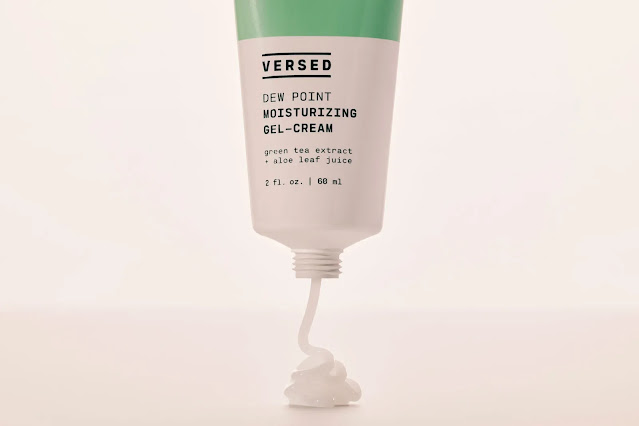
When your skin feels dry, there's only one solution: moisturize. However, there are actually many ways to fulfill this desire.
Light or rich? Lotion or gel? Suitable for day or night? But for many of our thirsty friends, the biggest dilemma is choosing between a moisturizer, a facial oil, or a hybrid of the two.
While both provide a more hydrated, softer complexion, there are key differences between moisturizers and facial oils. Read on and we'll explain everything you need to know, including layering.
Moisturizers & Oils.
What is a moisturizer?
Moisturizer is an important part of your skin care routine for all skin types—even if you have oily or acne-prone skin.
They're made with a blend of water- and oil-soluble ingredients that moisturize the skin (yes, there's a difference) and strengthen its barrier.
There are many types of moisturizers: from lightweight gel-creams to richer products like Skin Soak. There are even moisturizers for other concerns like fine lines, like our Advanced Night Cream.
What is facial oil?
They're made with a blend of water- and oil-soluble ingredients that moisturize the skin (yes, there's a difference) and strengthen its barrier.
There are many types of moisturizers: from lightweight gel-creams to richer products like Skin Soak. There are even moisturizers for other concerns like fine lines, like our Advanced Night Cream.
What is facial oil?
As you might have guessed, facial oils are usually made up of only oil-soluble ingredients, which means the focus is on moisturizing rather than moisturizing.
This makes them particularly beneficial for dry and aging skin, two skin problems that are made worse by slowed sebum production.
When shopping for oils, look for skin-friendly oils such as marula, camellia, cloudberry seed and jojoba oils.
(Editor's note: Our Sunday Morning Antioxidant Oil Serum isn't your average facial oil. It contains both an oil and a water phase, so you get the best of both worlds in one smooth, radiant product. And it's suitable for everyone skin type.)
Should I use moisturizer, essential oil, or both? Aside from the ingredients, moisturizers and oils both serve the same purpose: softening the skin.
All skin types benefit from a moisturizer, while dry and aging skin may prefer a facial oil. We recommend using both if you're very thirsty or want to boost your barrier's defenses during the winter.
All other differences come from the formula itself, so it's best to look for ingredients that work for your skin type. Need some good acne treatments? Look for ingredients that soothe redness and inflammation, like the green tea in Dew Point.
If you're very dry, try squalane, and if you're dehydrated, try hyaluronic acid. Are you focusing on whitening? Maybe a moisturizer with vitamin C is your best option.
Don’t forget personal hygiene, too. Your shoulders, legs, arms, and lips can also become dry. Just like other parts of our skin, they show signs of aging.
To combat both problems, apply an essential oil or body lotion (whatever you prefer) after you shower or whenever your skin feels loose. Don't skimp on chapped lips; we recommend our nourishing lip oil, which hydrates longer than regular lip balm.
How to Layer Moisturizer and Oil As a rule of thumb, all skin care products should be applied from thin to thick, i.e. moisturizer first, then facial oil.
This makes them particularly beneficial for dry and aging skin, two skin problems that are made worse by slowed sebum production.
When shopping for oils, look for skin-friendly oils such as marula, camellia, cloudberry seed and jojoba oils.
(Editor's note: Our Sunday Morning Antioxidant Oil Serum isn't your average facial oil. It contains both an oil and a water phase, so you get the best of both worlds in one smooth, radiant product. And it's suitable for everyone skin type.)
Should I use moisturizer, essential oil, or both? Aside from the ingredients, moisturizers and oils both serve the same purpose: softening the skin.
All skin types benefit from a moisturizer, while dry and aging skin may prefer a facial oil. We recommend using both if you're very thirsty or want to boost your barrier's defenses during the winter.
All other differences come from the formula itself, so it's best to look for ingredients that work for your skin type. Need some good acne treatments? Look for ingredients that soothe redness and inflammation, like the green tea in Dew Point.
If you're very dry, try squalane, and if you're dehydrated, try hyaluronic acid. Are you focusing on whitening? Maybe a moisturizer with vitamin C is your best option.
Don’t forget personal hygiene, too. Your shoulders, legs, arms, and lips can also become dry. Just like other parts of our skin, they show signs of aging.
To combat both problems, apply an essential oil or body lotion (whatever you prefer) after you shower or whenever your skin feels loose. Don't skimp on chapped lips; we recommend our nourishing lip oil, which hydrates longer than regular lip balm.
How to Layer Moisturizer and Oil As a rule of thumb, all skin care products should be applied from thin to thick, i.e. moisturizer first, then facial oil.
The only exception is our Antioxidant Serum Oil; since it has the properties of both an oil and a serum, it can be used before, after, or in place of your moisturizer.
Moisturizers and facial oils both contain large molecules designed to slowly absorb and moisturize the outermost layer of skin.
If you're looking for deeper penetration (which helps create a plumper, youthful complexion), we recommend using the Moisture Maker before applying your moisturizer and/or oil. Because serums contain smaller molecules, they absorb faster and can penetrate deeper beneath the skin layers, leaving skin plumper and more hydrated both above and below the skin's surface.

Post a Comment